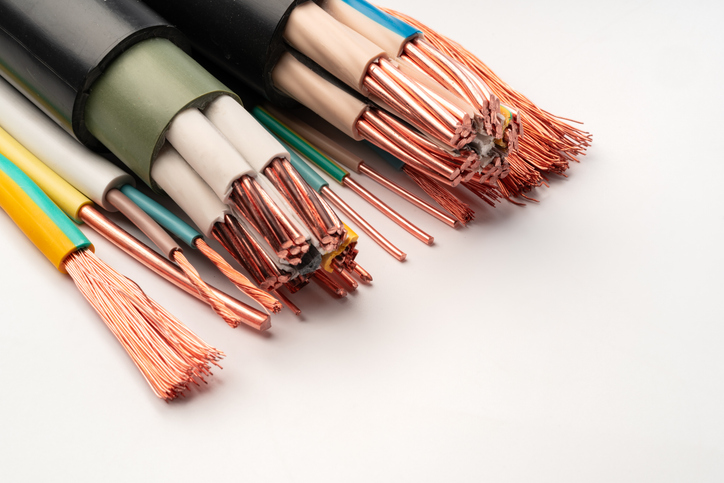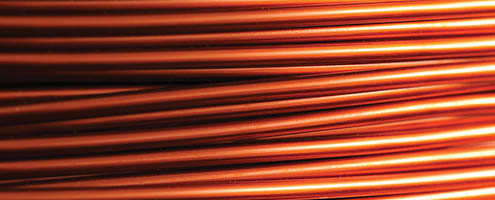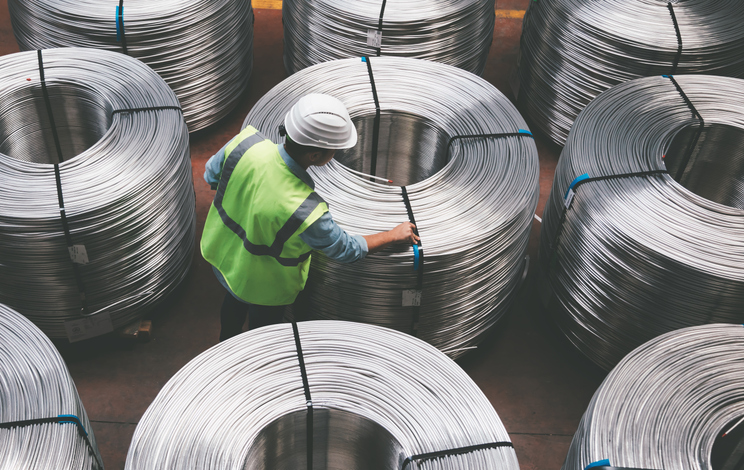Electronic Current Ratings
As an electrical current flows through a conductor, heat is generated. Since heat must be dispersed, many factors must be considered before a safe current rating can be used in a wire and cable construction. Some of these considerations include: the maximum temperature rating of the insulation and jacket, the ambient temperature, the electrical duty cycle, the number of conductors in the cable, the conductor AWG size and the heat transfer characteristics of the system.
Understanding Current Ratings in Conductors
The current rating of a conductor determines how much current it can safely carry without overheating. This rating depends on several factors, including the material of the conductor, its cross-sectional area, and the ambient temperature.
Copper, for example, is widely used due to its high conductivity and thermal stability, allowing it to carry more current than other materials like aluminum. However, as the current flowing through a conductor increases, so does the heat generated due to the resistance in the material. If the current exceeds the conductor's rating, this heat can cause the insulation to degrade or even melt, leading to potential short circuits or fires.
To prevent such hazards, it's important to choose conductors with appropriate current ratings for the intended application and to consider factors like temperature rise or load increases. Proper conductor sizing ensures that the electrical system operates efficiently and safely under all expected conditions.
Factors Influencing Electronic Current Ratings
There are several key factors that influence the determination of safe current ratings for electronic applications:
- Maximum Temperature Rating of Insulation and Jacket: Insulation and jacket materials are rated for maximum temperatures. Exceeding these ratings can result in the degrading of insulation, which can lead to potential failure or short circuits. It is essential when choosing a wire or cable that can withstand the heat generated during operation, as well as considering the ambient temperature and electrical duty cycle.
- Ambient Temperature: The ambient temperature directly affects the conductor's ability to dissipate heat. With higher ambient temperatures, this reduces the current-carrying capacity of the wire since the heat is generated by the electrical current, making it more challenging to disperse. Current ratings are typically given at a 25°C and adjustments must be made for other temperatures.
- Electrical Duty Cycle: The electrical duty cycle refers to the duration and frequency of current flow through the conductor. A continuous flow of current generates more heat than intermittent flow. When determining current ratings, the duty cycle must be factored in to ensure the insulation can handle the thermal load over time. Understanding the duty cycle is essential to avoid overheating in wire systems used in varied electrical applications.
- Number of Conductors in the Cable: When multiple conductors are bundled together within a single cable, the heat dissipation can become more challenging. Each conductor generates heat, and the close proximity of these wires makes it more difficult for the heat to disperse. With this, the current-carrying capacity of each conductor in multi-conductor cables must be adjusted downward to ensure safe operation.
- Conductor Size (AWG): The size of the conductor influences the amount of current it can handle. Larger conductors have less electrical resistance, which allows more current to flow with less heat buildup. Smaller AWG sizes have higher resistance, resulting in more heat generation at the same current levels.
- Heat Transfer Characteristics of the System: The ability of a system to transfer heat from the conductor to the surrounding environment is another critical factor. The design of the installation, including factors like ventilation, conductor spacing, and the use of heat-conductive materials, plays a significant role in determining safe current ratings.
Electrical Current Industry Standards
Current ratings for electronic components are governed by several industry standards organizations. Organizations like the International Electrotechnical Commission (IEC) and Underwriters Laboratories (UL) play a role in developing these standards. Some of these include:
- IEC 60115: a series of standards that covers various aspects such as power rating, resistance tolerance, temperature coefficient, and durability under different conditions. It ensures that resistors meet a consistent level of reliability, making them safe for use in electronic applications.
- UL 758: specifies the requirements for appliance wiring material (AWM). It outlines the construction, testing, and performance criteria for insulated conductors used in appliances and electronic equipment. This standard ensures that wiring materials are safe for use under specific conditions, including exposure to heat, moisture, and mechanical stress.
Compliance with these standards is critical for manufacturers to ensure that their products are safe and perform reliably under expected operating conditions.
Electronic Currents Size Chart
The following chart offers data that may be used as a guide for determining the proper conductor size or maximum current to be carried by various conductor configurations. Please note that this information is for copper conductors with an ambient temperature of 25C and a frequency of 60hz. These values are to be used for low power electronic and control applications. Please refer to published information in the National Electric Code, Industry Standards or UL/CSA publications for guidelines relating to power applications. Also, the user should consider that all insulation temperature ratings are time dependent. Running an insulation at a higher service temperature will result in a shorter life expectancy due to aging conditions. Thus, system design life must also be considered when applying maximum current ratings.
To use the chart shown below, please select any two of the three variables plotted (maximum current, insulation temperature rating or AWG size), and the third is determined. Please note that multiplying factors are listed for different numbers of conductors. For example, a 5 conductor 18 AWG cable, insulated with 105C PVC, can carry 7.2 amps (9 amps x 0.8 factor) per conductor.
View this Page as a PDF >

Related Resources

Basic Ampacity Values
Ampacity, or current carrying capacity, is defined as the current a conductor can carry before its temperature rise exceeds a permissible value.Learn More
Selecting a Conductor
Even in the design of a simple single insulated wire many factors must be considered, including physical properties of the conductorLearn More
Popular Jacket Types
Jackets cover and protect the enclosed wire or core against damage, chemical attack, fire and other harmful elements which may be present in the operating environment. Learn More


